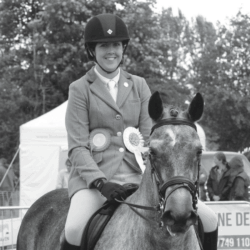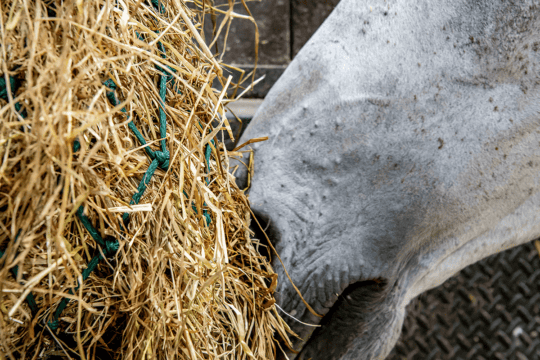Featured Professional
Cushing’s disease, or PPID, is being diagnosed in more and more horses, but what can you do to manage the condition and keep your horse happy and healthy? Vet Becky Lees explains
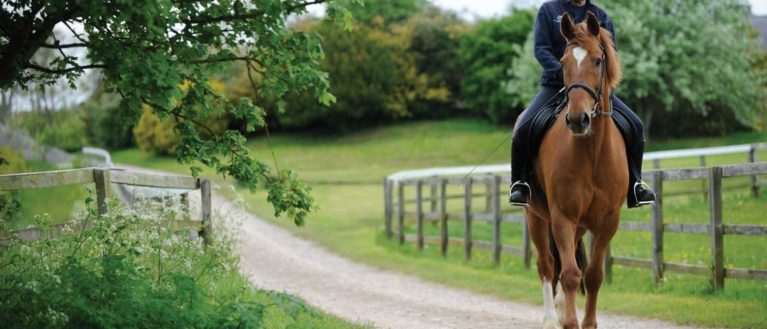
Formerly known as equine Cushing’s disease, pituitary pars intermedia dysfunction (PPID) is now the fifth most commonly recognised syndrome by horse owners in the UK, which has been helped by improved awareness and better diagnostic testing.
PPID affects the pituitary gland, which is located at the base of the brain, and is normally regulated by a substance called dopamine and produces a variety of hormones. In horses with PPID, the pituitary gland doesn’t produce enough dopamine. This means that the gland is unregulated and produces too many hormones, and the signs of PPID are associated with these elevated hormone levels.
Did you know? PPID is the preferred term for the disease to differentiate it from Cushing’s disease in dogs and people, which have different causes and treatments.
Who is at risk from cushing’s disease?
PPID is associated with ageing – compared with a 10-year-old horse, a horse of 15–20 years is three times more likely to have PPID and a horse of 20–25 is six times more likely. It has been seen in horses under 10 years old, but this is rare. All breeds and types of equines can develop PPID.
Look out for the signs
The onset of PPID is gradual, and the early signs are often difficult to spot and are commonly attributed to old age, but you may start to recognise one or more of the classic signs, which include…
- laminitis
- an abnormal coat, ranging from mild changes in shedding or colour during the early stages through to a curly, overgrown coat in the later stages
- abnormal fat distribution, including fat pads around the eyes
- loss of muscle condition, with a pot belly and wasted topline
- excessive, patchy sweating
- increased drinking and urination
- lethargy and depression
- poor performance
- recurrent infections, such as hoof abscesses and sinusitis
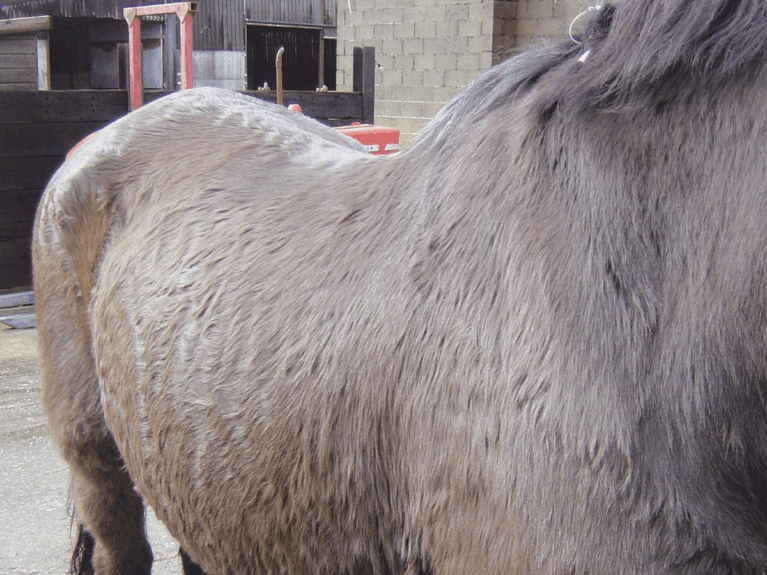
Did you know? The first sign of PPID may be an unexpected bout of laminitis.
Time to test
If you think your horse might be showing signs of PPID, ask your vet to check him over. If they think it’s possible your horse has the condition, they’ll take a blood sample that will be tested to check the levels of ACTH, which is one of the hormones produced by the pituitary gland. If the levels of ACTH are raised, your horse will be diagnosed with PPID.
Treating PPID
PPID isn’t curable, but it’s treatable and can be managed. There’s only one veterinary medicine licensed for the treatment of the signs associated with PPID, called pergolide. This drug helps to normalise hormone secretion from the pituitary gland into the bloodstream.
Because the treatment affects hormone production, there’s usually a short lag between beginning treatment and seeing an improvement in the signs. It’s usually 6–12 weeks before you can see a difference and coat changes often take the longest to improve, as these only become apparent when your horse next sheds his coat.
Unfortunately, although pergolide will improve the signs of PPID by normalising your horse’s hormone levels, it won’t stop the progression of the disease. This means that he may go on to develop new or recurrent signs of PPID and this is usually an indication that the dose needs adjusting. The rate of progression is poorly understood and it varies widely between horses who are affected. Your vet will start your horse on the lowest possible dose, then monitor his progress.
Close monitoring
After treatment has started, your vet will take another blood test to measure your horse’s response to treatment. Typically this is performed every 4–6 weeks until the levels of ACTH in his bloodstream normalise. This gives the best indication that an improvement in signs will follow. If the blood test shows that
the ACTH levels are still elevated, your vet may recommend altering the dose.
Once your horse’s ACTH levels have normalised and the PPID is under control, it’s recommended that blood tests to monitor ACTH levels should be carried out at least twice a year to ensure the current dose of pergolide is correct. Checking your horse’s ACTH levels every six months means that your vet can pick up any early indicators of PPID progression in your horse and take action to regain control of the disease.
It’s recommended that one monitoring blood test is performed in August or September, because the pituitary gland is more active in horses during the autumn months and it’s thought that there’s an increased risk of developing signs during this period. A second routine test should then be performed in spring.
As well as blood testing, it’s important to be vigilant and monitor your horse closely for any changes in his signs or developments of new ones. Laminitis is potentially the most damaging of all of the signs that may develop as a result of PPID. Bouts of laminitis can occur intermittently and without warning, so it’s very important that risk factors for laminitis, such as PPID and weight gain, are controlled. As well as managing your horse carefully day to day, regular monitoring of his ACTH levels and adjusting treatment appropriately will reduce the risk of laminitis.
A team effort between you and your vet is the best way to monitor your horse, and ensure that his PPID is kept under control and that he leads a happy and normal life.
Feeding for health
There’s no one-size-fits-all approach to the nutrition of horses with PPID, because horses with the disease vary in their nutritional requirements depending on their body condition score, as well as the stage of the disease when they were diagnosed. For example, one horse with PPID may be overweight and need a weight loss plan to reduce the risk of laminitis, whereas another may have lost a lot of weight and muscle mass prior to diagnosis, and need a nutritional programme to build up his condition.
Whatever their weight, all horses with PPID are considered to be at risk of laminitis, so it’s important to keep the sugar content of their diet low. If you’re concerned about what to feed your horse, ask your vet for advice.
Supporting him through it
PPID can have many knock-on effects on your horse’s health, but there are lots of ways you can help keep him as well and comfortable as possible, including…
- checking the fat cover of your horse fortnightly Although the majority of horses with PPID lose weight, some are overweight. In both cases, it’s very important to regularly monitor his fat cover and weight using a weightape or weighbridge so that changes to your horse’s diet can be made accordingly
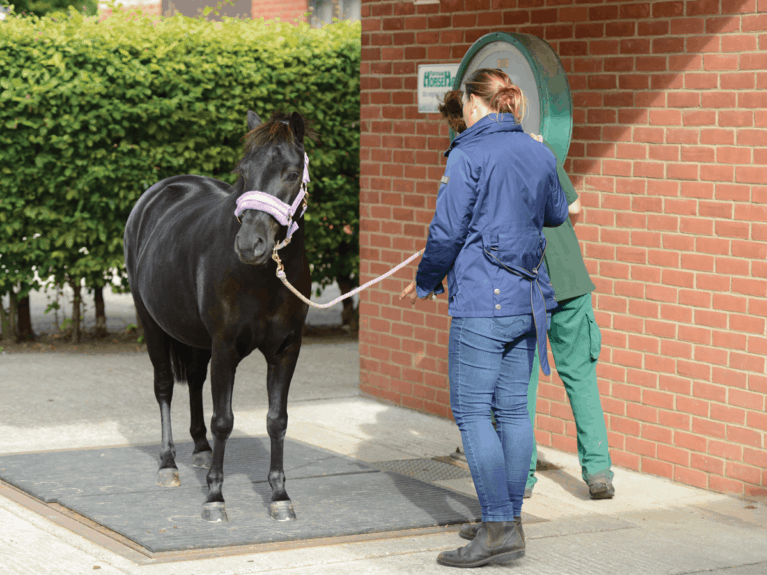
- feeding an appropriate diet Work with your vet and ask them to recommend a nutritionist to create a tailor-made nutritional plan for your horse
- daily exercise Many horses with PPID continue in their athletic careers and exercise is always helpful for their metabolism. If your horse is sound, keep up regular work. Your vet is the best person to guide you on the level appropriate for your horse
- regular hoof care Farriers play an essential role in the early detection of hoof problems, including abscesses and laminitis. Even in unshod horses, a check from a registered farrier every two months is recommended
- regular dental care Although PPID doesn’t increase the likelihood of dental disease, dental problems are common in older horses, and horses with PPID are at a higher risk of recurrent infections such as sinusitis and periodontal disease. A thorough dental examination by your vet or a qualified equine dental technician is recommended every six months
- worm control As they get older, horses are more likely to have higher worm burdens. This risk is increased in horses with PPID, as they’re more susceptible to parasite infestations. Use of a targeted worming programme, incorporating faecal worm egg counts and testing for tapeworm, then worming as appropriate, is recommended. Your vet can advise on this
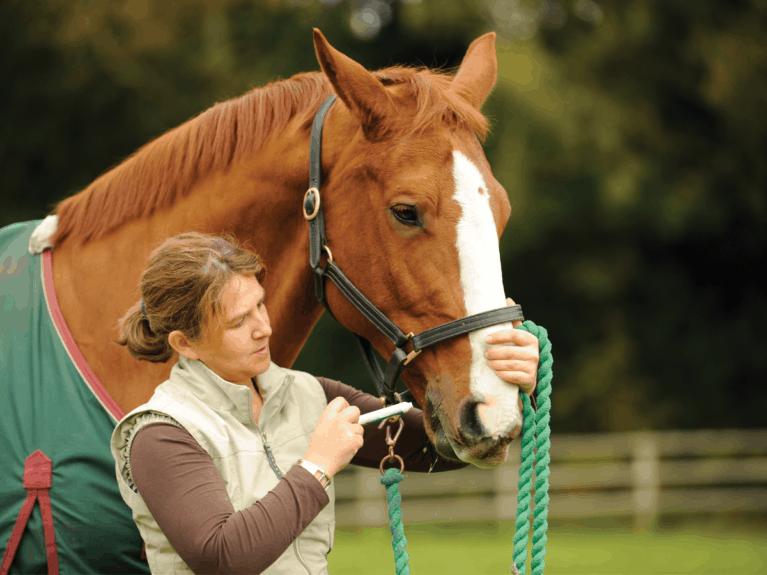
- regular health checks Evidence suggests that carrying out health checks regularly can improve the quality of life in elderly human patients and it’s likely that horses with PPID will gain similar benefits, as it provides an opportunity for you to discuss any concerns and observations with your vet
- clipping and good coat care Coat changes are one of the most common signs of PPID. Regular grooming can help to improve your horse’s coat and keep his skin healthy, as well as helping you to pick up on any coat changes quickly. Clipping and rugging as necessary can help your horse cope with changeable weather conditions and stay healthy
- vaccination Often, older horses who no longer compete don’t get vaccinated. However, horses with PPID have reduced immunity to infection and it’s also known that immunity decreases with age, so it’s very important to vaccinate these horses
A bright future
While PPID has no cure, it certainly doesn’t mean the end for horses who’ve been diagnosed. The key is to stay in touch with your vet to ensure the condition is kept under control. With careful management and appropriate treatment, many horses go on to live healthy, happy, active lives for many years to come.




